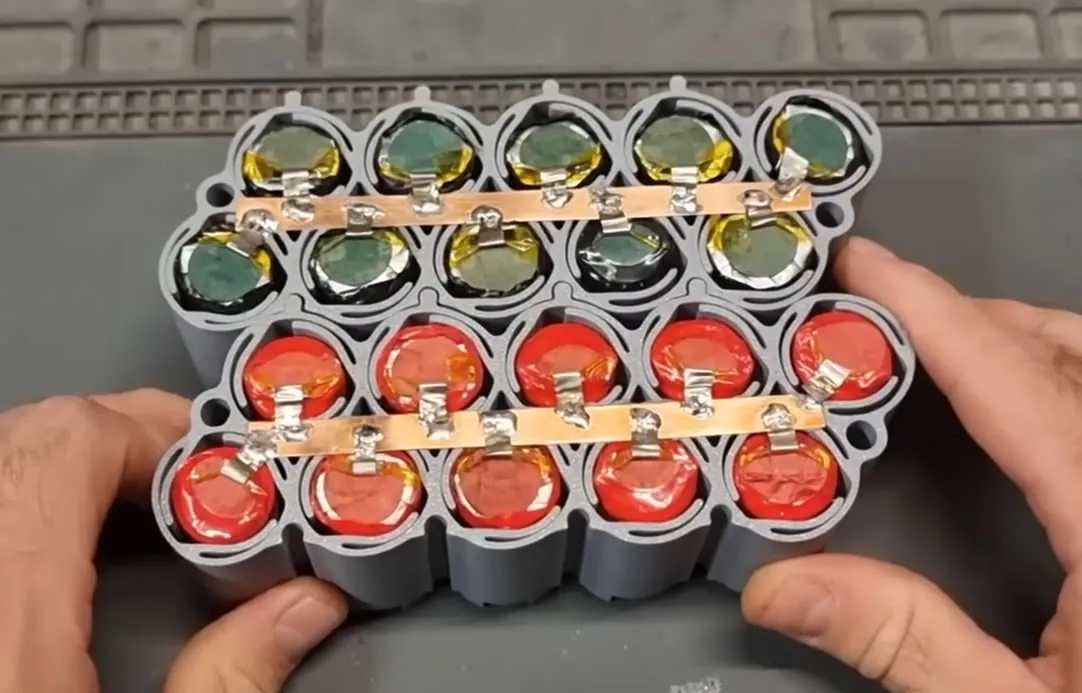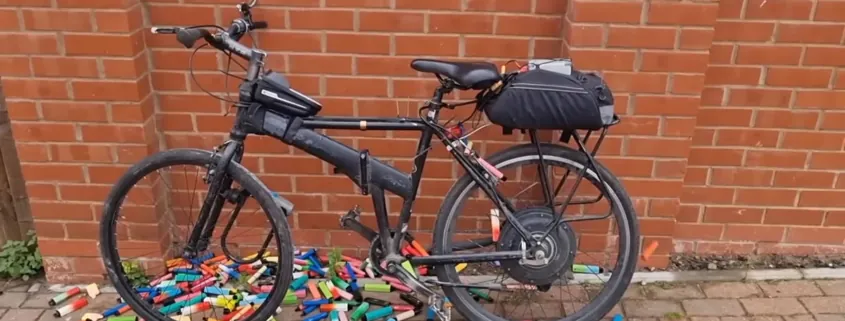Man Builds “Dodgy E-Bike” from 130 Used Disposable Vapes
Chris Doel has taken a unique approach to addressing the e-waste epidemic caused by disposable vapes. He collected 130 used vape batteries, the larger “3,500 puff” types with model 20400 cells, which he found littered at a music festival. Doel then repurposed these batteries to create a powerful 48-volt, 1,500-watt e-bike battery that propelled an e-bike for more than 20 miles with minimal pedaling.
Doel’s project, showcased in a YouTube video, demonstrates the wastefulness of disposable vapes. Many of these devices contain rechargeable lithium-ion batteries, but manufacturers opt to sell new ones instead of promoting recycling. Estimates suggest that more than 260 million vape batteries enter the trash stream annually in the UK alone, leaving a significant e-waste problem for future generations to address.
While Doel’s project is impressive, it is crucial to note that attempting to recreate his “dodgy e-bike” is not advisable. The process involves potentially dangerous steps, such as popping out components from vape cartridges using a vise clamp, desoldering batteries from cartridges that may still contain concentrated substances, and wiring them together using a balance board and 3D-printed cell holders. Doel emphasizes the importance of safety precautions, including having a fire extinguisher on hand and demonstrating the consequences of improper battery contact.
Despite the risks, Doel’s e-bike, which cost approximately $60 in filament and materials to assemble, showcases the potential of repurposing vape batteries. Most of the cells he used are rated for a minimum of 300 cycles, which, while not extensive, is more than some bikes and scooters actually undergo.

Watch the video:
Powering an E-Bike using Disposable Vape Batteries
Disposable Vapes Evade Regulations and Contribute to E-Waste
The UK plans to ban disposable vapes starting in June 2025. In the US, most disposable vapes and other vape products that appeal to younger users should be illegal, with only 34 tobacco vape products approved by the Food and Drug Administration (FDA). However, the FDA rule primarily targeted pre-filled nicotine cartridges for reusable devices, leaving disposable models in a gray area that hundreds of brands have exploited.
The FDA has issued warning letters, but disposable vape companies often evade regulations through name changes, as demonstrated by Elf Bar. The Associated Press reported in June 2023 that more than 9,000 new vape products have emerged in the US since the FDA began requiring registration in 2020, with the surge primarily driven by Chinese-manufactured disposables.
According to the US Public Interest Research Group, 11.9 million disposable vapes were sold in the US in March 2023. The EPA classifies liquid nicotine as a hazardous waste, making e-waste recycling nearly impossible. Additionally, the lithium-ion batteries in these devices hinder easy recycling, even for Drug Enforcement Agency buybacks. US PIRG estimates that the lithium contained in each year’s wasted vapes in the US amounts to about 23.6 tons, sufficient for 2,600 electric vehicles.
Doel’s project serves as a powerful reminder of the urgent need to address the e-waste crisis caused by disposable vapes. As governments and regulatory bodies work to implement stricter controls, it is essential to raise awareness about the environmental impact of these devices and encourage more sustainable alternatives.
- Bestselling Vapes in UK After Disposable Ban: What to Stock 2025 - August 8, 2025
- Argentina Debates Stricter Vape Laws Amid Prohibition Failures - August 8, 2025
- Nigeria Advocacy Group Urged to Hike Tobacco & Vape Tax by 100% - August 8, 2025







